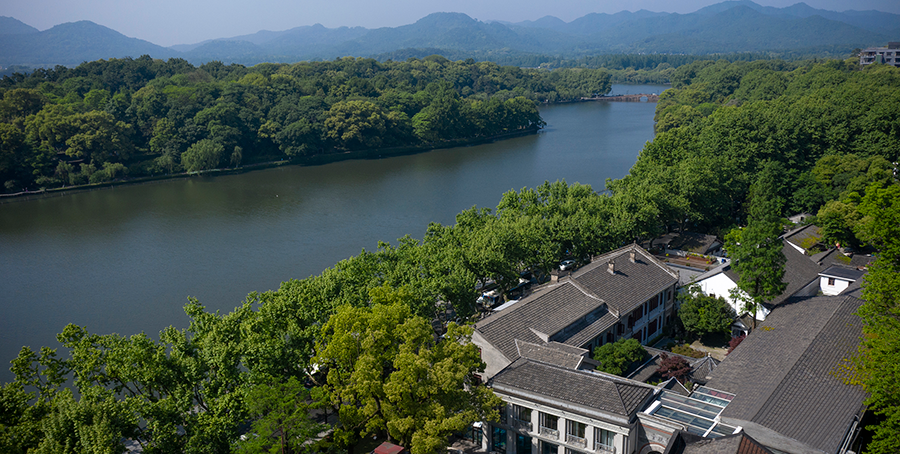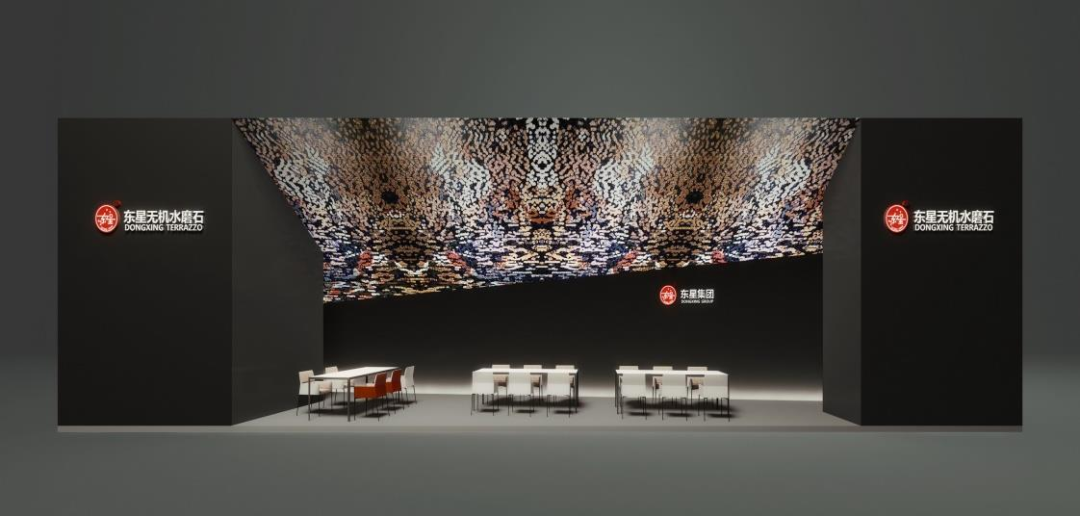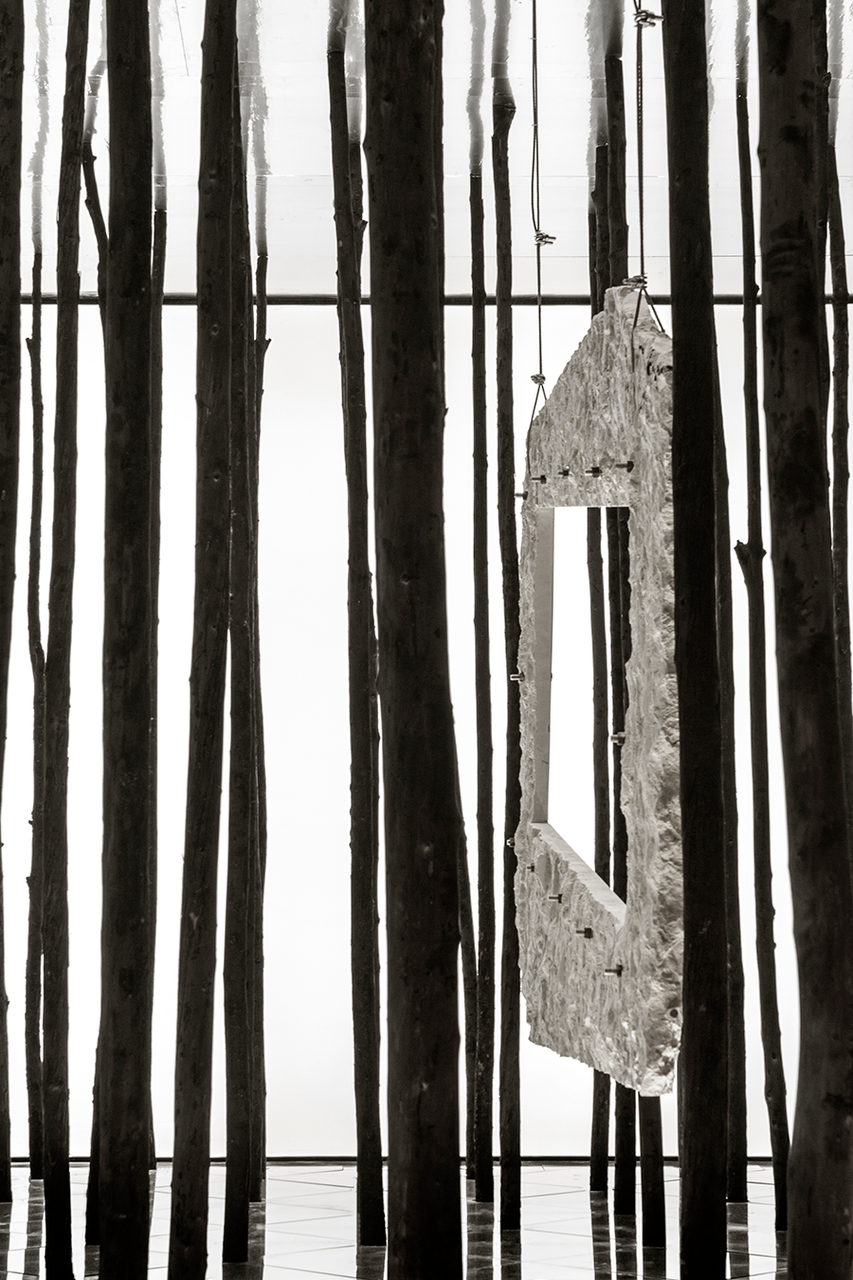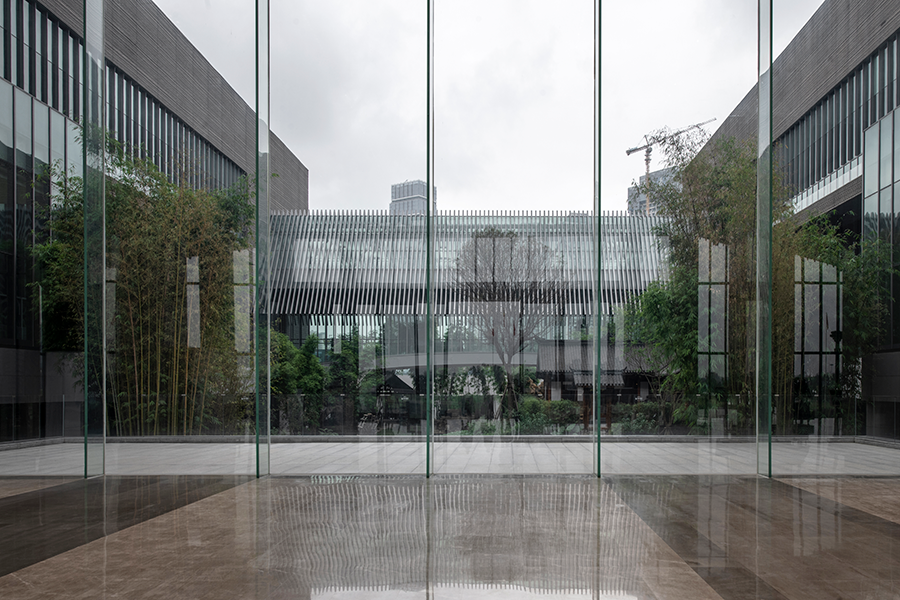- 注册
- 登录
- 小程序
- APP
- 档案号


建筑现场 · 2023-05-19 15:16:24
特别鸣谢 | 首席领先伙伴
RARA 系统定制家居
以构建国际领先的系统定制家居品牌为理念
对“IDD世界领先设计对话”的支持


IDD世界领先设计对话,是广州设计周联合GIA广州设计周全球伙伴联盟中的中外设计领先机构、组织和媒体发起的一项对话世界设计领先者的国际设计交流计划,IDD世界领先设计对话以「MASTER MIND巨匠的思索」为思想探寻的的主旨方向,希冀通过与世界领先设计巨匠对话,探索世界领先设计思想,以世界领先推动中国领先,以中国领先影响世界设计。
IDD世界领先设计对话 · 宣传片
十几年来,广州设计周对于中国设计与世界领先设计思索的交流对话从未停止,IDD世界领先设计对话以对话巨匠、发掘新声、臻选杰作三大内容版块构建年度运营体系,由此推动世界领先设计与中国设计之间的对话交流和发展。

对话巨匠,追随领先
Dialoguing With Masters To Follow The Leading
IDD将面向世界各国在设计领域具有领先建树、实践和思索的业界翘楚或机构,并联动中外领先设计机构、组织和媒体共同推举,每年甄选“IDD年度设计巨匠”,全年通过登门访谈、演讲论坛等形式对话“IDD年度设计巨匠”,探寻巨匠的思索,策划形成访谈视频、专题、出版刊物等内容,分别在HKDC香港设计中心的BODW+/viuTV进行全球播放,并在中外设计领先传播平台和渠道进行宣发和展示,希冀汇集世界领先设计思索,启迪中国乃至世界设计产业的更新发展。
对话巨匠 追随领先 | VOL.9
谢天
中国 | China
谢天 Tian Xie
设计师,艺术家,教授
中国美术学院国艺城市设计艺术研究院院长
Designer, artist, Professor
China Academy Of Art (CAA) Guoyi Urban Design Art Research Institute
中国美术学院副教授、中国美术学院国艺城市设计艺术研究院院长,大学教授,室内设计师,艺术家等不同角色带来的经历始终伴随着他对设计与艺术的探索与思考,谢天将设计置身于传统美学、哲学的场域下进行考量,并从生活到消费,个体与社会,永恒与短暂的矛盾关系中进行辩证的思考,并最终融入自己的文化积淀与艺术表达之中。
Tian Xie is an Associate Professor and the Dean of Guoyi Urban Design Art Research Institute at China Academy of Art, a scholar, a talented interior designer and an artist. He wears different hats to explore between design and art, Prof. Xie designs within the realm of traditional aesthetics and philosophy, engages his cultural perspective and art expression, life and consumption, individual and society, eternal and temporary are always in his design thinking.
2016年,谢天主持杭州G20峰会主会场艺术品陈设设计及相关配套宾馆的室内设计,匠心独运地运用了山水、云山、竹等阐释中华民族文化的自然元素,不仅彰显了大国风采,使世界惊叹,而且成为了国家级建筑的典范。
In 2016, Prof. Xie was responsible for the artwork in the main venue of the G20 summit in Hangzhou, together with the affiliated hotel’s interior design, where Chinese shanshui, cloud, mountain and bamboo are carefully integrated into the designs that impressed the world with China’s traditional cultural elements. His design has become a national example.
- IDD对话巨匠系列专访 -
对话谢天:探寻东方设计巨匠的艺术思索
广州设计周 x RARA x OBJEKT境界杂志 联袂巨献
【对话谢天:探寻东方设计巨匠的艺术思索】访谈正片

如何成为普利兹克建筑奖获得者?
How to become Pritzker Prize winner?
这个概率太低了,尤其是室内设计师更不可能。因为(一个主持设计师)每年要做十几个项目,思维要切换十几个不一样的项目,而且商业项目的思考方面本来就错综复杂的。这种生产型的工作习惯一旦养成了,以后十年、二十年再改回来就太难了,主要是思维方式很难改回来。
It is almost impossible especially for an interior designer. For a design office that designs more than a dozen commercial projects with different concepts which are very complicated. Designs have to meet deadlines and this working pattern is not easy to change in the next ten, or even twenty years.
唯一可行的方法是从今天开始把事物所从一百来人变成几个人。公司先“减肥”,然后再坚持做二十年(高品质的项目),才有可能做到得“普奖”的水平。
The only possible way is to make the office smaller, “loose weight”, with a small team less than 10 people who would practice high quality designs for twenty years, maybe it is a way closer to Pritzker.
这是我听王澍讲的,他得普奖十年了,每年只接一个项目,而且不接商业项目。有时候我说听他讲这些,感觉还真有道理。我有在反省自己,我们的团队人很多的时候就没有办法把设计做成很纯粹的,那太难了,要进行综合性分析,你自己内心,真正的骨子里最想要的是什么?一种是认为很多钱就是很快乐,另一种是有一点钱就可以,设计可以做到 85 分左右就很好,还是说做出一种有个性甚至是某种突破(的设计)。
I spoke to Prof. Shu WANG, the Pritzker Architecture Prize Laureate, 2012, he does not design for commercial projects, he works on one project a year. Sometimes I agree with what he said. I am also reflecting myself. Our team can not design for the sake of design. We have to consider too many aspects, what do we really want? Some people would say making more money is a way to greater happiness. Some people are OK with making less money if design can achieve above 85 points (out of 100), to make a signature design or a breakthrough.


杭州玫瑰园私人别墅 Hangzhou Rose Garden private villa
©中国美术学院国艺城市设计艺术研究院
这种突破从2012年到现在,这十年我还在慢慢走在这条路上,这个过程不可能一下子就跨过去。我个人觉得可能还要经历十几年,有可能到我65,75岁的时候,突然间在我的设计里面能呈现出一种肌肉,是一路走下来的结果,有可能会出现一个我自己很喜欢的设计。
I have been practicing adn aiming for a breakthrough in the past ten years since 2012. I personally think it might take anther 10, 15 years, very slowly, when I am 65, 75, to see the textures in my designs that I truly like.
所以我觉得对每个人来说,总是要有一些理想的,对设计师来说也要有抱负和理想。尽管在做商业设计,我们也需要思考如何做更好的商业设计。随着中国人的大众审美水平的普遍提高,以及我们服务的客群那一小撮人,大家的观念在慢慢地提升,有可能哪一天你会遇到那个所谓的伯乐,再加上自己多年的积累,就像自己磨刀磨练的过程中,正好磨到了那个可以去施展的时刻,遇上了伯乐,这种交集是无比快乐的。
For all designers we should have dreams and ambitions. Even when we are designing for commercial projects, we need to ponder how we could design better commercial projects. As the Chinese are getting much better at appreciating good designs, the clients are hoping for higher qualities, and we continue to practice. One day, maybe we will meet the right client to reach the breakthrough.

杭州玫瑰园私人别墅 Hangzhou Rose Garden private villa
©中国美术学院国艺城市设计艺术研究院
设计是作为职业还是事业?在这两种不同的赛道上如何保持领先?
Design as profession or career? How to lead on each path?
我这两年考虑最多的就这两个词,把设计做成职业还是事业。如果我想把它做成一个事业,我发现我就应该找和我能力互补的所谓的合伙人,之后需要把原来39个员工可以慢慢发展到69个,199个,甚至更多。那样其实就是事业型的设计公司。我是股东,也是其中某一个设计总监,甚至只负责某一板块都可以,把它往事业方向去发展,就做规模化。
I have been considering whether to see design as a profession or a career. If I practice as a career, I need to find partners who supplement my skills, expand the office from 39 to 69, 199, or even more. In that scenario, I am a shareholder and in charge of one sector as design director. The office will become bigger.
那如果不往事业发展去做,就按保持 39 个人左右。我觉得做一个设计师,既要肩负设计的任务,又要去做商务,还要去管财务和员工的考核,所有事情都自己做,这些年走下来其实会觉得很疲倦,会在思考真正是为了什么要这么辛苦。
In a different scenario, if I keep the office around 39 staff, as the lead designer, not only do I need to design, I also need to look for and take care of the business side of the design studio, such as accounting and staff evaluations. After a few years, I would think "why work so hard, so tiring?"




杭州秋水山庄 Hangzhou Qiushui Villa
©中国美术学院国艺城市设计艺术研究院
所以差不多在2012年的时候我就开始想了,把设计做成事业还是职业。也不是说拍个脑袋就决定,最后决定把39 个人变成 9 个人。那个年代也不叫裁员,比如说发现这个人的能力侧重于方案,那个人侧重于技术,最后一个人侧重于其他互补的方面,他们三个之间性格还是共融的,在专业上相互是补充的。我就说:“你们三个人去成立一个事务所,然后再带两个人出去,我看靠谱,在我这不是个事儿。我说我这个年纪的价值观各种方面的原因,你们几个年轻人出去单干,有些项目也可以带出去,也可以创造新的市场的关系,未来可期。这样就出去了三五组人,团队就自然精简下来了。”那一年,我42岁。
So I decided to downsize the office from 39 staff to 9 back in 2012, the decision did not come by easily. I encouraged my staff to start their own business and give them guidance per their capabilities, 3-5 staff with different skillset to form a new office together, gradually my team is smaller. I was 42 that year.
现在再去反观,觉得那个时候做设计一点都不快乐,纯粹就是为了赚钱。想要赚钱,就要多接项目,跟客户去沟通,尽管设计时你是在思考,用设计的逻辑去分析,通过(解决)功能上的问题也好,审美上的问题也好,去考量如何将一个项目做得更好。但是这些思考的背后,其实初心还是为了商业利益。
Looking back on those years, I was not happy as I was only designing for money. I was hoping to create good designs while I got the commissions, however deep down I know I need to make money out of those projects.
杭州秋水山庄 Hangzhou Qiushui Villa
©中国美术学院国艺城市设计艺术研究院
45 岁之后,我感觉做设计就很有意思,可以很自然而然地,自行地做更深入的思考。这个深入思考就不完全建立在过去的一些设计逻辑上。在这个基础上,你就有可能会有更多的想去玩它。这个人和我一聊,双方都很感兴趣,跟客户之间就有很多挺好玩的这种(关系和互动),就特别好。
After I turned 45, I realized design can be so meaningful. I spend more time thinking and exploring designs as I want to see more possibilities; I interact more with clients who have the same goals, which stimulates my design process in a positive way.


杭州秋水山庄 Hangzhou Qiushui Villa
©中国美术学院国艺城市设计艺术研究院

您现在如何选择客户和设计项目?
How do you choose clients and design projects now?
就在前几天,一个客户叫我给他做一个设计,那天聊完他请我吃饭,两杯酒下肚以后我就跟他说,“我做可以,我们设计费多少都聊好,然后过程当中的阶段性开会,您参加一次,提出任何问题,我们都可以相互之间交融,把它如何做得更好。方案阶段,一次施工图出来,材料选好,我们一起来看一次。从此之后你不能跨进工地半步。然后哪一天进工地,我给你打电话,比如说软装灯光全弄好,连植物和花都摆好了,我给你打电话,请你来,你再来。如果这样可不可以?不然我这个项目不做。他说“可以,我保证可以”。(笑)
A few days ago, a client asked me to design a project. We had dinner together, after two drinks I said to client “I can design with a fee that works for us both, it is more important you attend design meetings and raise questions per my suggestions, I design better this way. In the schematic design phase, once construction documents are complete, materials are selected, we meet together to confirm, afterwards, you can not enter the project site unless I call you to check when the soft decorations are ready. I will design for you only if you agree the terms above.” Client agreed.
所以这前面三次的交流,我们必须掏心窝,把这个事情聊透了。聊透之后,就是把它做透,把它做到一个感觉非常有趣的一个状态,那样我感觉就很有意思。
The first three meetings with clients are essential. Managing expectations on both sides is key to designing an interesting project.
上海民生美术馆 Shanghai Minsheng Art Museum
©中国美术学院国艺城市设计艺术研究院
当然有些客户本身就没空去深度参与到设计过程中,那就因人而异,我们要根据不同的对象采取不同的措施。但目的其实不是说我比你高或者你比我强,都不是,因为大家都一样都平等的。
Obviously, each client is different and we work differently per clients’ need, we are equal parties, and we find balance during the process and in the end.
还有些人找我聊以后,我聊着聊着发现不对。我说,“你要的东西我给不了你,我给你推荐一个人,TA更合适你”。另外我有时候也让客户再去多聊一两个(设计师),或者再想一想是否请我做设计。其实就算你不请我做设计,我也要感谢你,为什么呢?我说你给了我时间,你请我做设计,看似好像给了我钱,其实我要花很多时间给你。如果你不给我钱,我就很多时间给我自己,所以我说我要代表我自己,感谢你,我有更多的时间来做自己想要做的事情了。
There are also clients that I met, I do not think I am the right designer and I will recommend a more fitting designer. I will also encourage clients to talk with more designers before deciding which one to work with. I am grateful to those who hired me. I get paid to design (designing is what I love); I am grateful to those who did not hire me. I have more time for myself, so I can do what I prefer.

上海民生美术馆 Shanghai Minsheng Art Museum
©中国美术学院国艺城市设计艺术研究院

目前哪类项目您最有兴趣去尝试?
What type of projects do you love to explore recently?
这几年一直更喜欢尝试在设计周期间做展位设计,我感觉挺有意思。
I have enjoyed designing exhibition stands for the past few years.
首先,最多这种展位4天就拆掉了;其次,(设计师)可以尝试各种材料,还有个优点是这整件事不可能花很多钱,就可以让设计师去玩一下,比较轻松地做设计。
The stand is temporary for 4 days, I could try different materials, the entire project is more fun and manageable.
我给你举例子。前年的广州设计周,我做了一个东星水磨石的展位,二百多方,算是设计周里标准展位面积最大的一类。然后我提出,设计周就四天,期间你搬了很多大石板过去挺劳民伤财的。不如这样,板材样本可以少弄一点。再者,给客户的样板也都是一小块一小块的石材,其实挺重的,人拎着走个十米就可能就扔掉了,不太会带回去,这也是浪费。
I will share a project I did, the year before last year I designed a booth for Dongxing Terrazzo, a bit over 200sqm which is bigger than most of the other booths during the Guangzhou design week. The booth will open for 4 days only and will be demolished after the design week, I thought it would be quite expensive to ship the heavy terrazzo back and forth for such a short period of time, if to give away samples, visitors might throw them away soon due to the heavy weight, what is the design solution?
那怎么弄呢?所以我前年在设计周期间,就把他们展位改成了叫“东星电影院”。门口一个小区域可以给客人喝个茶,喝个咖啡,有几块板展示一下,当然也做得非常有质感。更重要的是电影院前面有个闸机,想要进去这个闸机要扫一个二维码,填上名字,电话号码和地址,它就生成了一个二维码,二维码在闸机上一扫,人就可以进去。
I designed a Dongxing Cinema, a lounge area to have tea and coffee along with a few boards introducing the company and products, in front of the cinema there is a gate machine, visitor needs to get a personal QR code by scanning the general QR code and filling in contact information, then to get in the gate after scanning the personal QR code.
2020 广州设计周东星水磨石展厅
2020DONGXING INORGANIC TERRAZZO booth
里面的空间是别有洞天,就只有两个大的视频,一个是面积 100 多方的视频投在天花板上,一个是墙上的像电影院的银幕大屏,再买10 张席梦思床垫,用黑布包起来放在地上和十几个黑色的懒人沙发,可以躺着看电影。在设计周看展走着累了,可以在这个地方躺一会儿,休息一下。墙面上的视频就只放 4 分钟,是关于水磨石的形成。但不是普通的视频,我还专门找了(国美)美院的电影学院老师去了他们工厂,带了一只真的孔雀去拍了一个类似于纪录片的创意电影,我认为这就很有意思了。来看设计周的设计师们都走累了,可以在“电影院里”坐一会,眯一会,甚至也有人坐在里面拿着电脑做 PPT 的,各种各样的都有,我感觉的这个东西就很好玩。
Inside the gate, there are two big screens projecting on the ceiling and on the wall, we put 10 Simmons mattresses and a dozen bean bags, all wrapped in black for visitors to lie down or sit at their will. The projected video was about how Terrazzo is made, I commissioned a teacher from Film Academy at CAA who filmed a Peacock and made a short documentary, visitors can watch it while taking a break, or even taking a nap, there are visitors working on their laptops inside, it is a fun scenery.
然后,设计周结束以后刷卡闸机里面就留下很多设计师的通讯方式,石材样板可以邮寄送给别人,如果是我收到这样的样本我肯定交到材料库去弄好,哪一天用到水磨石的,可能会就把它打开看,感觉这块不错,联系方式都有,他还有很强的记忆点,“就是那个在设计周期间做了电影院的品牌......”。
By the end of the design week, Dongxing collected the contact info for their database and can mail catalogues or samples to those are interested. And visitors would remember the booth and get in touch in the future when in need. The experience becomes a unique show of the brand. Dongxing asked me to design the booth again last year.

2020 广州设计周东星水磨石展厅
2020DONGXING INORGANIC TERRAZZO booth
同样的设计周,同样的品牌,去年我做了同样二百多方的展位设计。我用了 100 多根木头,直径差不多15-18 公分左右,5米高的木头给它烧成黑焦炭,在半个展厅里面排成一根一根矩阵型的状态,做出雕塑的感觉。
In the same area, I put more than 100 logs(diameter 15-18cm, 5meters long) burned in charcoal finish lining a matrix within the booth,which looks like a sculpture.

2021 广州设计周东星水磨石展厅
©中国美术学院国艺城市设计艺术研究院
在这 100 根的被烧焦的树木里面有一片2米乘3米的一块大板,中间 90% 的部分被人类猎取了,掏空了,剩余的余料和边角料用钢板给它们夹在一起。挂在整个这个黑碳的森林当中,这其实是在警示着如果人类不断地猎取自然的材料,未来的地球就有可能就都变成烧焦了的木头,所以人要多用可持续的方式来使用材料。
Among the 100 charcoaled logs there is a piece measured at 2 m * 3m plank, 90% was taken by other people. I put the left-over together with steel sheets hanging in the charcoal forest. It is also to give people the warning that we might see the world burned like this if nature was damaged endlessly. We should work with materials in a more sustainable way.
然后另外一半的空间用的是三个 LED 的圆柱,这三个柱播放的是现代人们美好生活的景象。有动物多样性,植物多样性,花开花落,从花朵的含苞欲放到慢慢打开的整个的场景和感觉,就非常的美好。一半是烧焦碳化的未来,一半是花开花落的未来,取舍就在中间,形成的这种反差。然后给更多现在的人一种警示,一种思考,我感觉做这种东西就挺好玩的。
The other half of the booth are three LED columns that play videos about modern life, animals, plants, flowers are budding, blossoming and fading, such a delight. The booth exhibits a contrast a charcoaled burned future, a bloomed future, the choice is in the middle. The concept is to make people think, almost a warning. This is interesting to me.

2021 广州设计周东星水磨石展厅
©中国美术学院国艺城市设计艺术研究院
去年我给设计周的另外一个品牌叫RARA做的展位的设计。它的特点是它是做全屋的,更多的都是产品比如岛台、衣柜都已经设计好了,高度标准化的东西,那展位设计是要看如何让它在有限的展位空间里变得更加有趣,或者说让趣味性最大化。
I designed another booth last year during the design week. The brand is called RARA, a total house solution brand. The island and cabinet are all modular designs with high standards. The booth design is to make those modular designs more interesting, in another way to maximize the fun.

2021 广州设计周RARA展厅
©中国美术学院国艺城市设计艺术研究院
去年我给他做外立面时候用了六角形的薄片金属片。把整个外立面 5 米高是成千上万的会动金属片,下面在地底下装了一排 N 个出风口,这些金属叶片就开始晃动了。金属叶子是选择了两种材质,渐变的两个颜色分别代表山水,布局上形成比较抽象的《富春山居图》,因为它是一个杭州的企业。一个灵动的展位立面总会让人想去看看的,那我认为作为商家来说,你的目的就成功达到了的。
I covered the 5-meter high booth façade with metal plates in hexagon, thousands of metal plates are waving because I put air vent outlets on the floor and air will make the plates move. The metal plates are in two different colors that represent one of top Chinese landscape painting, an abstract “Dwellings in the Fuchun Mountains”, as the brand RARA is from Hangzhou. An intriguing booth that attracts visitors to check out. For the brand, it is a successful show.

2021 广州设计周RARA展厅
©中国美术学院国艺城市设计艺术研究院
对于需要服务的家居品牌,我觉得现在大家都在做品牌,都大同小异。未来过个五年可能要么卖掉,赚一笔,卖不掉有的就倒闭了。能做上个三五十年甚至百年品牌的那太难了。我觉得正儿八经地要做一个百年品牌,或者说做好代理,或者老板自己开发做品牌也好,一定要跟着某种线索,要一步一个脚印地去做。对我们设计师来说,我们期望的是更有高情商的思考在里面,而不是简单的做一个造型。
There are so many brands that are trying and thriving, some brands get sold in 5 years with a profit, some brands will disappear due to financial loss, it is extremely difficult to maintain a brand up to 30, 50 or even 100 years. To create a 100-year brand, either the brand owner or representation of a brand, it is important that they have vision or certain consistent idea for the brand to grow, then follow it step-by-step with hard work. For us designers, we should take these into consideration while conceptualizing, not just simply create a form of sort.
2021 广州设计周RARA展厅
©中国美术学院国艺城市设计艺术研究院

有哪些关于未来的思考,您特别看好或者特别想要深度研究的方向?
What is your plan for the future? What aspects of research will you conduct ?
因为设计师是走在这个时代的最前沿的,必须得了解当下所有的科技,文学,艺术等等多个领域。了解之后你才知道哪些项目要重用什么,适度用什么,少用什么,做出取舍。这其中可持续是每一个设计师都应该要去思考的。
Designers are the forward thinkers, we need to keep up with all the latest technology, literature, art and many other changes. So we could design with good choices. One thing every designer should be aware of is to be sustainable.
可持续设计里两个点最重要。一个是自己设计项目里对材料,尤其是天然材料的猎取是不是可以少用?第二个是以项目为圆心,在直径 300 公里内取材,也就是就地取材。
Two key elements: not to destroy nature; to locally source materials, namely within 300km-diameter of the site.

成都天府国际会议中心
Tianfu International Convention Centre
设计一个好的空间就要考虑少用能源。就好比很多写字楼都是玻璃幕墙,结果就是白天阳光太亮,需要把窗帘拉下来,拉下来又感觉太暗,室内还要开着灯。这都是双重浪费。举一个正面的例子。我印象中,中国最早的酒店是广州白天鹅。这个酒店建筑的设计就很有意思,窗没有特别的大,窗的扇口会有一块挑檐板,通过这块板子折射的光照射到室内的天花板,在反射到室内,让靠窗边的三五米的空间里根本就不需要人造光。这其实就是一个好的设计。
A good design saves energy. For example, we see many office buildings’ façade in glass, inside there are curtains, people need to pull the curtains and turn on the lights, double costs. One hotel design I like is Guangzhou White Swan Hotel. The architectural design features small windows with overhang plates which reflect sunlight into the interior ceiling that lights up the space close to the windows, a good example of energy saving.
我经常打这个比方,现在我们国内盖一个楼假设需要100块钱,在这个楼100年的生命周期里,盖成的成本是25块,房地产开发商盖完楼以后25块就把楼卖掉了,那未来的100年里面有25块的维修基金,还有50块其实是能源消耗。
Here is another thinking of mine. Let's say, we spent 100 RMB in total on a building, that is given. In the 100-year life cycle of this building, traditionally the cost of construction is 25 RMB and the developer will sell the building at 25 RMB, another 25 RMB is for maintenance, the rest 50 RMB is energy cost. That is the current and traditional way.
做可持续建筑是怎么的呢?前面先付50%用于盖楼的成本,100 块里的 50 块花进去了。未来整个维修基金、设备更新可能只要花 20 块就可以,30块用于能源消耗。所以也就是说,100 年的楼的生命周期里消耗的钱是一样的,但用到的能源就少很多了。
How to design a building in a more sustainable way? Allocating 50% on construction, 20% on maintenance, 30% on energy costs. In the 100 years’ life cycle, investment is the same, energy cost is much less.

成都天府国际会议中心
Tianfu International Convention Centre
反映在设计里面,这可以是很具体的操作。比如在做点评图的时候我经常问我的团队,“你这个灯用来干什么的?不知道它干什么的,那它就没有必要存在,可以拿掉。一个灯总要花钱买的,其次一个灯总要用电的。
During design reviews, I always ask my team: "what is this light for? Is it necessary? Get rid of it if not needed, save money and future energy".
一个空间用来干什么?哪些地方需要照明,哪些地方照明不够和怎么去补充,那么就把这些问题解决掉,尽可能做到有一定的氛围感,但不能说一片黑乎乎看不清楚,夹菜夹到鼻孔里去,肯定是不行的。(笑)一个空间尽可能在使用过程当中少用能耗。那么,比如说我设计同样一个家,我设计没做好,有可能五年后他要拆掉重做;设计做的好,有可能住 20 年他也感觉很舒服。这里除了施工单位和投资大小有关系之外,设计师是良心,是引导者,必须走在最前面,建议客户应该选择用什么样的水管,建议他用什么样的空调系统,门窗是怎么用,防水怎么去做好,选择什么样的材料等。
We need to consider where needs light, how to create certain ambiance while save energy. A client might demolish the house in 5 years if I did not design well, he might live in the house for 20 years if he likes my design. Besides construction and budget, designer needs to guide the client and needs to lead the way with a good conscience. Materials such as water pipes, air conditioning, door and window, waterproofing, small details matter just as much.

成都天府国际会议中心
Tianfu International Convention Centre

您以作品”修墙-客观世界2019“参加过2019年威尼斯双年展的展览。那一年的主题是 ”May you live in interesting times”(希望你活在有趣的时代)。您感觉现在是活在一个有趣的时代吗?
Your artwork, "Wall - Objective world2019" has been part of Venice Biennale in 2019, the theme that year was ”May you live in interesting times“, do you feel like you are living in interesting time? Why?
“修墙-客观世界2019”威尼斯双年展海报
Artwork: "Wall - Objective world 2019" at Venice Biennale 2019
我认为在全世界现在的格局下,我们其实不是生活在一个有趣的时代。所以说 2019 年这个主题被特别地提出来,就是一种希望,或者以我个人的理解是一种倡导,希望大家活在一个幸福的时代。其实我们现在并没有,所以我的作品名字是“修墙 2019 客观世界”,其实是源于特朗普上任美国总统之后,美国时代周刊的一张封面,一个红的封面,特朗普就站在这个封面,顶天立地,然后他的对面站着一个小孩,那小孩在哭泣。
I do not think we live in an interesting era. I brought up the theme hoping everyone could live in a good time. My work was inspired by Time’s cover photo when Donald Trump got elected, the red cover, Trump stands there, a child stands on the other side in tears.

《时代》周刊(2018年7月21日)封面
Cover of TIME
那个时候特朗普上任以后宣称要在美墨边境要修墙。美国跟加拿大是没有墙的,同一条马路穿过境内外,出来进去都非常自由,而跟墨西哥边界他必须得要修这堵墙。这给我带来了很多启迪和思考。
Back then Trump was just elected and claimed to build the wall at the US-Mexico border, however there is no walls between US and Canada, why did he have to build a wall at the Mexico border?
我在想,人类在游牧的时代,打猎的时代,我们是没有村落,就是走到哪就住到哪。农业时代出现后,人们发现一颗种子掉在地上,还能长出东西来。人们就开始所谓的群落式的定居住下来了。长久定居之后,我们就形成国家,形成了社会制度,就变成人与人之间的那堵墙。所以我经常开玩笑说就连一个公司,老板和财务必须有个独立办公室,员工都还可以敞开,中层干部半敞开,其实总是有那么一堵墙来区隔你我。我觉得人和人不应该有这么样的区隔。
That made me think, when people were living in nomadic and hunting period of time, there was no village or home.During agriculture period, people realized seeds could grow from land, they stayed and lived in groups. After a long time, there forms a country, and a social system which gradually "encouraged" a wall between people.I would see in most all the companies, the boss and finance staff needing private offices, normal staff can sit in the open space, there is always a wall somewhere. Though it is a norm, I still think there should not be walls between people.

参展威尼斯双年展的艺术作品:“修墙-客观世界2019”
Artwork: "Wall - Objective world 2019" at Venice Biennale 2019
所以我当时就在这个主题下,写下了所谓的设计想法。我们设计师和艺术家比,有个优点,我们可以建模(笑)。我就建了 abc 三种方案,想表达我的想法,然后加上一些文字,编成英文版,就寄给了他们。他们看了以后觉得这个主题有点意思,就采用了。
So starting with that idea, I proposed three plans. Compared with artists, we designers have an advantage in that we can work with modeling software, so I presented my plans. The organizer selected the one that you saw.
您会给年轻设计师什么样的建议?
What kind of advice would you give to younger designers?
我觉得现在的年轻设计师也好,或者说年轻的客户群也好,优点和缺点都有。优点是他们思想更开放了,信息会更广,更及时。我 93 年开始工作,那个年代我们都是通过买进口的图书和订阅一些全世界认为比较好的杂志才能捕捉到更新的信息。而这个时代当下的好设计,不仅仅是空间的,建筑的,也可能是服装,是珠宝,是产品等等。我认为当下的年轻人比我们那个年代拥有更丰富、更饱满的信息和知识点。
I see both positive and negative sides from young designers and young clients. On one hand, they have an open mind that absorbs more information in a timely manner. When I started working in 1993, I had to buy imported books and subscribed to international magazines to get the latest news. Today young generations get much better informed about good designs, space, architecture, fashion, jewelry, and products, etc.
反过来,他们这一代人可能吸收得太多了,很难去做一些取舍,可能什么都想要,甚至会急于求成,千万不能太刻意去寻找博眼球的设计,或者更刻意地去为了设计而设计。我个人觉得设计还是需要时间沉淀的。90 后有优势,如果他能撑得住,慢慢的去研究,花更多的时间去思考,我相信他们未来肯定比我们这一代人会更扎实。
On the other hand, when they had so much information, they might want everything and do not want to make choices. I believe design takes time. We need to design for a meaning, not to design for the sake of design or for drawing attention. There are advantages that Gen Z could explore. As long as they spend time designing with critical thinking and researching, they will be more successful than me.
G20主会场
G20 Summit Venue
另一点来说,我建议设计还是要从生活入手。首先(室内)设计跟建筑还不一样。建筑它更侧重于技术加上审美和创作,室内设计除了有审美,还有心理学,时尚,更多的是从生活里所感悟到的给人提供一种所谓的生活方式。室内设计从小到每一个毫米要怎么去控制,小空间如何做得巧,做得妙,做得更多功能性,更高的使用率等等,这些其实我觉得是跟一个设计师的生活经历有很大关系。那要怎么去经历生活?你必须得更多地走出去。然后不仅仅是简单的看,要看事物背后的故事和逻辑。有一句话说叫“知其然,更要知其所以然”。
I want to address that design inspiration shall come from life. Unlike architecture’s technical innovation and aesthetic, interior design is considering not just on aesthetic, but more on psychology, fashion and lifestyle. Interior design is trying to control all the interior elements, how to make small space more functional and efficient down to the 1mm level. I think a designer’s experience has much to do how they design and how to experience life. So designers have to see more, not just check out but also try to understand the story and the logic behind, "how and why".

G20主会场
G20 Summit Venue
比如说做医院,那该怎么去更好的研究医院和医院的空间跟患者的心理之间的关系,病患、医生跟护士这些从业者长期在这个空间里面,如何给予他们内心精神上的一些关怀,其实不是简单的一个表面的造型或者颜色。
If you design a hospital, research on how space might affect doctor patient interactions, what about those nurses who work in space most of the time, how to show empathy on a psychological level, not just to paint a color or create a form.
我们现在很多年轻设计师可能会模仿学习一些大师的作品,但大师的作品你简单去看一、两件其实是没有用的。你要看什么,看TA整个成长过程的线索。为什么在这个时间段TA出现了这种做法,还要结合那个时代,当时的技术,那个年代的客户的特点来综合地去看。其实一个真正好的东西不应该是网红的,应该是永恒的。
A lot of young designers will reference the designs by the masters, it is not enough if you just see one or two the master’s projects, try learn more about why the master would design under those circumstances, time, technology or client. The real good should not be short-lived popular, but to be eternal.

西湖国宾馆1号楼
Xihu State Guest Hotel
所以我觉得就是说年轻的设计师应该就是静下来,除了阅读,更多地看事情背后的逻辑。自己做的项目应该也要有一个研究室,找到一种线索。因为未来年轻人会越来越多,越来越厉害,如果你想要鹤立鸡群,那你需要走出你自己的一条路,而且这条路是永久的。那你从今天开始就要铺垫,不能随意地走,随意地走就没有积累。还要尽可能地少犯错误,而且这只是成长过程其中的一条线而已,你应该有更多条线, 比如说可以在材料层面做一些研究,甚至在整个空间的形态跟人之间的礼仪关系,跟人的精神世界的关系等方面做些研究。
I would encourage young designers to read more, find the logic behind, research more to find the unique voice in order to compete with the future young generations who are getting better. Starting from today, to build up the foundations, make fewer mistakes, research more on materials, relationships between space and people, or even on a spiritual level.
特别声明
本文为自媒体、作者等档案号在建筑档案上传并发布,仅代表作者观点,不代表建筑档案的观点或立场,建筑档案仅提供信息发布平台。
69
好文章需要你的鼓励

 参与评论
参与评论
请回复有价值的信息,无意义的评论将很快被删除,账号将被禁止发言。
 评论区
评论区